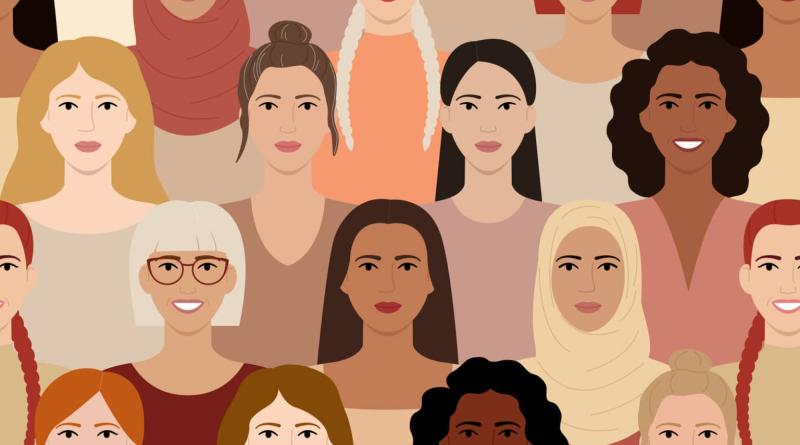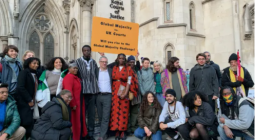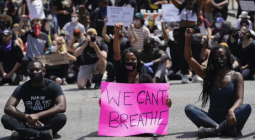Environmentalists You Should Know

Rachel Carson and Greta Thunberg are household names, but the list of female environmentalists throughout history is long.
Like many fields, the accomplishments of women in environmental work have often been overshadowed by men – particularly in the early years of the environmental movement. Women of color especially have received less recognition for their important work, even when it’s been crucial to our understanding of climate change, conservation, and environmental justice.
On International Women’s Day, we remember and acknowledge the highly accomplished female environmentalists that aren’t usually in the spotlight.
1. Isatou Ceesay (1972 – )
Now known as The Queen of Plastic Recycling in Gambia, Isatou Ceesay began noticing lots of trash – especially plastic – in her village of N’jau in Gambia as she grew older. Without weekly trash collections, piles of waste built up along the streets. Plastic bags began impacting local wildlife and would fill with water after storms, attracting mosquitos that spread disease. People in her community were even burning plastic for cooking fires, which released dangerous toxins into the air. After volunteering with the Peace Corps, Ceesay became even more incentivized to find ways to recycle the waste accumulating in her community. She thought, why not take this waste and find a way to repurpose it?
Ceesay began weaving purses out of plastic waste salvaged from the trash heaps with a group of women. Their choice to gather and work together was quite radical, given that women were expected to stay home and care for their families rather than work. The weaving project grew until Ceesay created the N’jau Recycling and Income Generation Group (now the Women’s Initiative Gambia): a large-scale effort that creates income for women by weaving purses out of plastic bags and other waste. Like many women in Gambia, Ceesay was unable to finish her education, and saw this project as a way to help women acquire skills that will help them earn money. It also encouraged more upcycling and creative problem solving around waste besides just plastic in the community. Ceesay eventually helped open a skill center for women in her village as well. The project continued expanding, and now there are more than 2,000 members across 40 groups.
2. Rosalie Barrow Edge (1877 – 1962)
Before becoming interested in conservation, Rosalie Barrow Edge was first a suffragist. She helped with efforts to pass the 19th Amendment – which gave women the right to vote – in 1920, and became interested in birds later in life while living in Long Island and New York City. She’s considered a “hellcat” in the history of conservation, angry about the male environmentalists and conservationists who were entrenched in government and their businesses (including pesticides, hunting, and timber) and chose which species and lands to save based on their own interests. Determined and far from demure, Edge contributed a great deal to the environmental movement, but her work has not always been recognized given her gender and strong personality.
In 1932, after learning of a tradition in Pennsylvania of killing birds of prey for sport, Edge raised funds from supporters to purchase a parcel of land in the Appalachian mountains. Here she founded Hawk Mountain Sanctuary: the first preserve for birds of prey. Recreationalists and scientists alike still benefit from the sanctuary, and in 1960, Hawk Mountain contributed important data on hawk migration that was crucial to Rachel Carson’s famous book on birds and hazardous pesticides, Silent Spring. Edge also worked on campaigns to preserve land in Yosemite National Park.
3. Wangari Maathai (1940 – 2011)
Born to a rural Kenyan farming family, Wangari Maathai later studied in Kenya, the US, and Germany, and became the first woman in East and Central Africa to earn a doctorate degree. She grew to see conflict, disempowerment, environmental degradation, food insecurity, and poverty as inextricably connected. “Poor people will cut the last tree to cook the last meal,” she once said. “The more you degrade the environment, the more you dig deeper into poverty.”
She heard from rural Kenyan women that their food supplies were less secure, there was less water, and they had to walk further to get wood for fuel, which took away time from other important household tasks, including childcare. Maathai wondered if she could use tree-planting as a way to alleviate poverty, improve the quality of life of women, and preserve the environment. In 1977, she founded the Green Belt Movement on these principals, which organized local woman to plant trees that prevented erosion/desertification in the community and created a nearby source of firewood. The organization has now planted 51 million trees in Kenya. Maathai also fought against the agriculture industry, which often seized land and forests from local people for their own use.
Maathai was voted into Kenyan parliament in 2002 , and was appointed Assistant Minister in the Ministry for Environment and Natural Resources. In 2004, she also became the first environmentalist and Africa woman to win the Nobel Peace Prize.
4. Disha Ravi (1998 – )
Disha Ravia is a young climate activist in India and founder of the Indian branch of the youth-led Fridays For Future network, which organizes strikes across the country advocating for climate action. She took part in the widespread farmer protests against new agricultural laws in India that favor large corporations, inspired by her own farmer grandparents who struggled with the impacts of climate change on their lands, like drought and flooding. Ravia was arrested in February 2021 at the age 22 and was accused of being involved in the creation and distribution of a digital toolkit with information on the protests. She was charged with sedition (inciting hatred against the government). Even after her arrest, Ravi has not given up the fight for climate justice. She continues working in her hometown of Bengaluru, India and beyond.
5. Winona LaDuke (1959 – )
Winona LaDuke is an Anishinaabekwe (or Ojibwe) enrolled member of the Mississippi Band Anishinaabeg, and lives on the White Earth reservation in northern Minnesota.
In the 1980s, LaDuke worked on a lawsuit fighting to take back land that had been promised to the Anishinaabeg people, but which the government had allowed to be taken over my lumber companies and non-Native people. The lawsuit was dismissed, but LaDuke didn’t give up. In 1989, she founded the White Earth Land Recovery Project (WELRP), which focuses on recovering the original land of the reservation. The nonprofit buys back reservation land that has been purchased over time by non-Native people, which in turn fosters sustainable development and provides economic opportunities for Native communities. WELRP also works on renewable energy efforts and Indigenous farming/sustainable food projects.
LaDuke was also a two-time vice presidential candidate with Ralph Nadar on the Green Party ticket, and is the executive director and a co-founder of the Indigenous environmental advocacy organization Honor the Earth, which played a big role in the 2016 Dakota Access Pipeline protests. She now operates a hemp farm on the reservation, and works to prevent Indigenous plants and heritage foods from becoming patented or genetically engineered.
6. Berta Isabel Cáceres Flores (1971 – 2016)
Growing up in the 1980s in Central America, Honduran Indigenous environmental justice activist Berta Isabel Cáceres Flores saw a lot of violence. At the young age of 19, she created the National Council of Popular and Indigenous Organizations of Honduras to fight for the territorial rights and livelihood of Lenca people. She fought to stop logging, mining, and famously, the proposed Agua Zarca Dam on the Gualcarque River that would cut Indigenous Lenca people off from vital resources and destroy a place of spiritual importance. She successfully pressured the company to pull out of the project after rallying community members and organizing a human road blockage to prevent access to the dam construction site, which stood peacefully for over a year. Flores was murdered in 2016 by gunmen in her home in Esperanza, and it was later determined that her murder was ordered by executives of the damn construction company. Her legacy lives on in her community that has been empowered to fight for their rights, even in the face of powerful companies.
7. Arundhati Roy (1959/1961 – )
Born in Shillong in northeastern India, Arundhati Roy studied architecture in Delhi, but is known widely for her writing and successful publications. Her use of writing as a form of activism has made her a target of Indian government, especially since the publication of her 1997 novel The God of Small Things, which won the Booker prize in 1997. She donated all royalties and prize money from the book to the campaign against the Narmada Dam. Her the landmark essay about the resistance movement against the dam – “The Greater Common Good” – was published in 1999, and told about the tribal communities that would be eradicated by its construction.
Roy has written prolifically, including a recent piece titled “The Pandemic is a Portal,” in which she discusses how the coronavirus pandemic has exposed existing weaknesses of our global infrastructure and social systems. Outspoken and unwavering in her opinions, Roy has faced major backlash for her activism, She was even taken to the Indian Supreme Court for speaking out against the dam. In 2010, she was also charged with sedition after she spoke out in support of Kashmir’s independence of India.
8. Dr. Sylvia Earle (1935 – )
Referred to fondly as “Her Deepness,” Dr. Sylvia Earle is a marine biologist and the National Geographic Explorer-in-Residence. She was a pioneer for women in her field – often being the only woman in male-dominated expeditions – and became first female chief scientist of the National Oceanic and Atmospheric Administration in 1990.
Her life has been dedicated to raising awareness about the pollution of ocean wildlife, and advocating for the protection of the seas, teaching us that we would not exist without this vital resource. Dr. Earle has logged over 7,000 hours underwater, led over 100 expeditions, authored more than 200 scientific publications, and holds the record for deepest untethered walk on the ocean floor at 1,250 feet. She was also one of first people to use SCUBA gear to view and document marine life.
Among more than 100 prestigious awards and honors, Earle was inducted into the National Women’s Hall of Fame in 2000, received the United Nations Environment Award and the Director’s Award of the NRDC, and was named one of Time magazine’s “Heroes for the Planet.”
9. Mollie H. Beattie (1947 – 1996)
ollie Beattie was the first female director of the U.S. Fish and Wildlife Service, and helped implement more than 100 conservation plans and create 15 wildlife refuges in her three years of service. She came to the position after working as commissioner of Vermont’s Forests and Parks and Recreation, and the deputy secretary of Vermont’s Agency of Natural Resources.
Among other accomplishments, Beattie oversaw the famous reintroduction of grey wolves – a top predator vital to the ecosystems of Yellowstone National Park – into to northern Rocky Mountains. She even helped physically carry one of the wolves to be released on in January 1991. Beattie always argued for strengthening the Endangered Species Act, and fought hard for conservation and the preservation of natural spaces. “The economy and the environment are the same thing,” she once said. “If it’s unenvironmental it is uneconomical.”
Congress changed the name of Alaska’s Arctic National Wildlife Refuge to the Mollie Beattie Wilderness in 1996, and her work and legacy live on.
Author: Paige Bennett
Photograph: m.malinika





